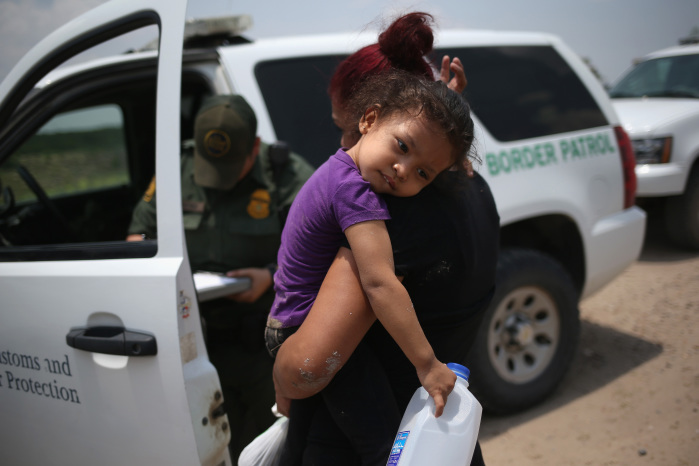WASHINGTON, D.C. – A new study on the child migrant crisis at the U.S.-Mexico border published by the Inter-American Dialogue states that the ongoing crisis – while dominating headlines recently – isn’t something that should have taken us by surprise.
“The writing was on the wall way before anyone was talking about it. This is not a new phenomenon. It started a while back,” the Washington, D.C.-based think tank stated in one of the study’s key conclusions.
IAD senior researcher Manuel Orozco told a packed gathering at IAD headquarters recently that observers have been following this trend of migration north for several years, noting that immigrants are arriving at the U.S-Mexico border because they are fleeing violence and a lack of economic opportunities in their home countries.
“Just as people left Central America escaping violence in the ’70s and ’80s, now in the 21st century, youth are being persecuted by paramilitary forces, gangs, cartels, arms traffickers and extortionists,” the IAD study, “Understanding Central American Migration: The Crisis of Central American Child Migrants in Context,” stated.
Violence in particular is the key driver of this migration and a lack of job prospects is another, according to IAD.

“A closer look at the situation and you’ll see that the lower the level of [economic] development, the higher the level of migration,” Orozco said. “You cannot address the problem without tackling the challenge of development in the region.”
The situation could have been prevented, said Christina García, membership mobilization manager at the National Alliance of Latin American and Caribbean Communities.
“We have a broken and outdated U.S. immigration system. Many of the undocumented immigrants already have relatives here in the United States, and we cannot talk about this situation without acknowledging that,” García said. “Our country hasn’t done anything in the past 20 years to allow people to immigrate in a legal manner.”
García added that a “fear of backlash from the other side [of the political aisle] is preventing U.S. President Barack Obama and immigration reform supporters from moving forward with legislation that would address the issue.
Orozco also pointed out that the situation has reached a crisis level in part because Central American leaders have done a poor job in the past of addressing the issue.
“While here in Washington there has been talk of the surge [in the number of migrants without immigration documents], none of the Central American countries have people asking their leaders how is it that they were allowing undocumented immigrants to leave their country every day for the past five years. [It] is a fact of which many government officials were aware,” Orozco said.
The expert also accused regional leaders of “significant neglect about the crisis and a trivialization in the region about what has been going on.”
Central American leaders are sensitive to that criticism, however, and they claim to have taken steps recently to address the concerns.
Several leaders met recently with President Obama in Washington, D.C., and they are planning additional meetings soon, according to Guatemalan President Otto Pérez Molina. Pérez Molina last week said he and his counterparts in El Salvador and Honduras hope to meet again with Obama to discuss an economic plan they say would offer their countries economic assistance to help stem the flow of migration.
Pérez Molina, who spoke in Bogotá, where he was attending the inauguration of Colombian President Juan Manuel Santos, added that El Salvador, Guatemala and Honduras have asked the Inter-American Development Bank (IADB) in Washington to help develop a study, the “Central American Economic Development Plan.”

The study would look at job creation, infrastructure and anti-crime measures to determine how to decrease the number of Central American migrants making the trek north. It would be modeled around Plan Colombia, Pérez Molina – a former general and ex-member of Guatemala’s special forces unit, the Kaibiles – added. Advocates of Plan Colombia credit it with reducing crime and violence and spurring development in the South American country. Critics say it has led to human rights abuses and the militarization of the region.
The Guatemalan leader told reporters that the IADB study is expected to be completed next month, around the same time that leaders from around the world will gather in New York for the opening session of the United Nations. It is there, Pérez Molina said, that he and the Central American leaders expect to meet with Obama to discuss the plan and address several other factors aimed at stemming the migrant flow north to the United States.
Said Pérez Molina: “We are working together to resolve this issue.”







